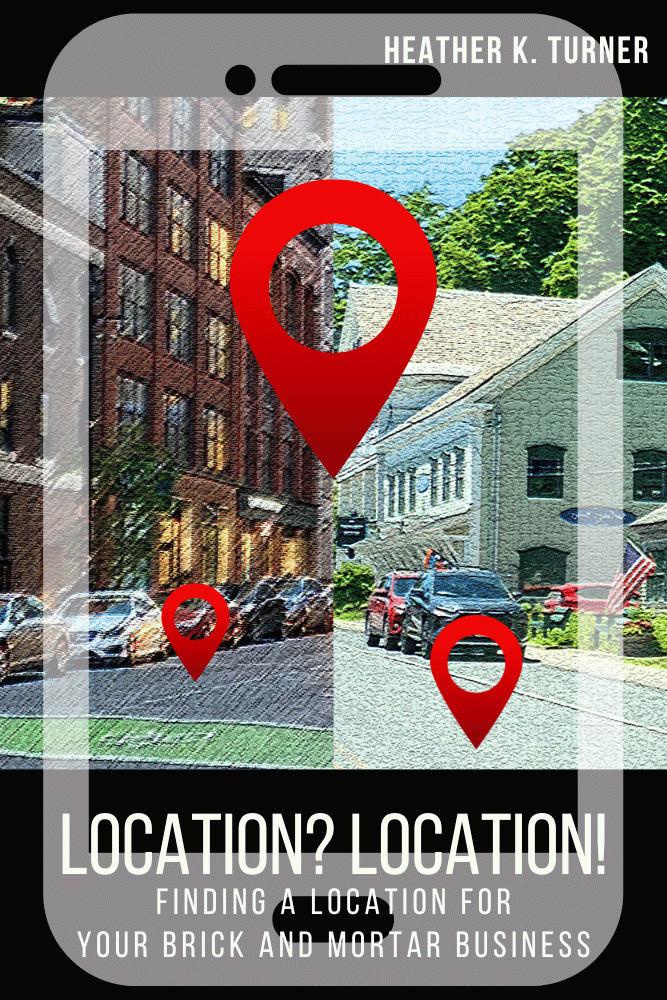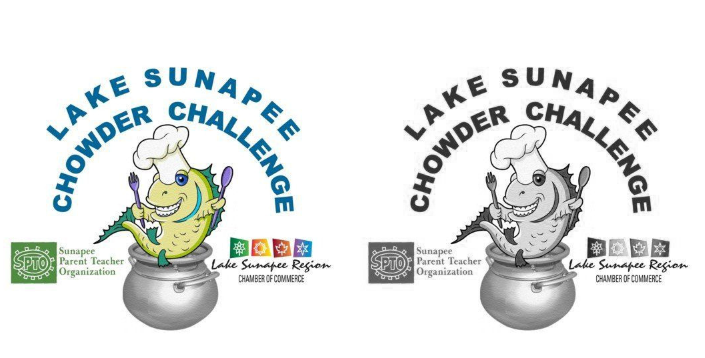by Heather T. | Jul 12, 2024 | Books, Business, Observations, Operations
 Are you interested in being an ARC Reader (ARC stands for Advanced Review Copy) for new books? These will primarily be business books, but we do have one fiction book in the works as well.
Are you interested in being an ARC Reader (ARC stands for Advanced Review Copy) for new books? These will primarily be business books, but we do have one fiction book in the works as well.
Our next book, Location? Location! Finding a Location for Your Brick and Mortar Business, will be ready to read in mid to late September 2024, with another book on marketing to follow in midwinter.
Signing up to be an ARC reader is an opportunity to read new books before they are “officially” published online and before anyone else.
In return, you agree to provide an honest review on Amazon to help others decide whether the book is worth reading or not. You need to be a current Amazon customer who has spent at least $50 previously to be able to leave a review. If you don’t have an Amazon account or have never used it, we also appreciate reviews on Goodreads. Amazon review guidelines.
I ask that reviews be honest, while I appreciate that people (especially ones that know me) might feel reluctant to leave anything critical on a review. Real reviews do help. And you can be kind AND be constructive at the same time. There is a great post on leaving reviews (positive and not so much) which is worth a read. Constructive feedback IS a gift.
ARC reviews should focus on what makes the book enjoyable or hopefully, in the case of most of my books, educational and valuable to new and existing business owners, while avoiding spoilers or major summaries (since most people reading the review won’t have read the book yet).
Talking about things like: was the information useful, easy to understand and did it give actionable tips or information can help new readers decide if the book suits their tastes and more importantly their informational business needs.
The Book will be sent in PDF format digitally by email about 3 weeks before official publication.
If this is of interest, please fill out the form to sign up! And THANK YOU!
Other Ways You Can Help:
- The #1 way you can help is to leave a review!
- Post a picture or quote from one of my books and tag me on Facebook or LinkedIn.
- Recommend one of my books on Goodreads.
- Pin or tweet your favorite of my books.
- Share one of my books on Facebook, Instagram or LinkedIn.
- Refer a friend that might find one of the books useful, especially if they are starting a business or in business and might need some help.
Location? Location? Finding a Location for Your Brick and Mortar Business overview:
Ditch the guesswork and navigate the key factors every aspiring business needs to consider before they sign on the dotted line for a property.
Finding a Location for Your Brick and Mortar Business is your roadmap to a thriving business reality. Order your copy today and turn your entrepreneurial dreams into brick-and-mortar success!
Whether you’re dreaming of opening a hair salon, a fitness center or a garden supply center, Finding a Location for Your Business offers the tools and knowledge to find a location that meets your needs and maximizes your businesses potential for success. Discover the secrets to making informed decisions and turning your entrepreneurial dreams into reality.
This comprehensive book covers essential topics such as community assessments, competition research, zoning and planning considerations, traffic counts, crime and safety, parking and traffic flow, employees and housing and much more.
Whether you’re a seasoned business owner or a newcomer to business ownership, this book provides valuable insights, and a detailed location and assessment checklist to help you make informed decisions.
by Heather T. | Feb 12, 2024 | Business, Food, Marketing, Observations, Operations, restaurants
 Recently there was an article on Eater. “Why not bring takeout containers to restaurants?” and I thought, wow this is such a great idea (not rocket science obviously) but I should start doing this. What a great way to save the environment and, by the way, save our favorite restaurants a few bucks in the bargain.
Recently there was an article on Eater. “Why not bring takeout containers to restaurants?” and I thought, wow this is such a great idea (not rocket science obviously) but I should start doing this. What a great way to save the environment and, by the way, save our favorite restaurants a few bucks in the bargain.
Which, of course, led to the inevitable 2 AM neurodivergent thought, OH!, how can a restaurant leverage this? There must be restaurants doing this already, and of course, there were and there are. Restaurants give discounts to diners who bring their own dishes (2019) and many more. One thing that I noticed though about the restaurants and other food service operations that offered this is there didn’t seem to be a ton of thought into “targeted” getting people back in the door. Some offered discounts off of a future meal, some off of a current meal, some free refills (for beverages) but not much real upselling.
From a customer funnel point of view, if you want to think about getting repeat customers back in the door, what’s the incentive to get them back in PLUS the incentive to spend more money?
I’d love to see a restaurant out there (and maybe there is, let me know!) who would offer the incentive “BYOC (Bring Your Own Container)” and get a voucher/coupon for a free coffee or tea and our signature dessert.
Why that? Coffee or tea doesn’t cost most to provide and if you created the incentive wisely a signature dessert could cost a few dollars or less to make. Tiramisu is cheap to make, so is a scoop of homemade (or a good prepared) mousse with some flavored whipped cream to zip it up. Dessert has a much higher profit margin on it typically than an entrée or appetizer.
If you just give them a discount or small incentive, it doesn’t do much for repeats, it can help, but what’s the upsell part of it?
If you get them to come in and get drinks, maybe an appetizer and a couple of entrees (make the must order an entrée as part of the small print on the coupon), it’s an incentive to get people in the door and spent money first.
Even if it’s a couple who come in regularly and they bring two takeout containers, give them two vouchers. If you look at it from the perspective of how is any different from giving them a $10 off coupon their next meal, it is different because your incentive is to give them something for free but they have to spend money first. Even without a couple ordering appetizers, if a couple’s tab is a couple of entrees (mid-priced restaurant average) 17.99 X 2, plus a couple of soft drinks (up the take if it’s beer or wine) 2.50 X 2, and the regular check average is $50.00 and you just “gave away” $3.50 in product, when it boils down to it that’s pretty inexpensive marketing. If your price points for your menu items are higher, the ratios are even better.
You actually get three birds with this: promoting eco-friendly practices, saving money on your own to go containers and getting people in the door for repeat dining. Even if you encourage regulars to give them to others, that’s not a bad thing, it increases brand awareness and you get the same result; you get more people in the door and they order the big-ticket items like entrees (and if your waitstaff is good at the in-person upsell, high profitably drinks).
If you are going to try any incentives like this, make sure they contribute to your bottom line.
I’ve seen too many restaurant coupons that just give a discount with no stipulations on use or no incentive to get people to buy more.
So if you create an initiative to bring in customers, track through what you get out of it. Is it a onetime sale, something that will get people to come in many times or something that will make people spend more money because of the incentive itself?
There were a couple of good articles I came across in searching for restaurants that did have to go container incentives that I think would be worth a read.
How can restaurants take advantage of sustainable packaging?
What Are Reusable Food Container Programs?

By the way, my first book just got released on Amazon this weekend in Paperback and on Kindle! Check it out! Finding a Location for your Restaurant: How to Scout the Perfect Location for your Dream of Opening a Restaurant or other Hospitality Business.
by Heather T. | Feb 7, 2024 | Business, Observations, restaurants
 There are three main types of people who want to open a restaurant.
There are three main types of people who want to open a restaurant.
Those who have been in the industry, usually chefs and cooks (but not always, sometimes it’s front of the house people), those who grew up in a restaurant environment, (i.e. parents or other family members owned or ran a restaurant), and the folks who have fallen in love with the “idea” of owning their own restaurant.
All of them have, and can run and own a successful restaurant, but I have found in 40 years of working in and with the hospitality restaurant that’s it the first two types that have better success and better success long term with running a restaurant.
I’ll be blunt and I am really not trying to talk people out of owning a restaurant, but to be realistic about what someone is getting into if they have never worked in a commercial food service establishment before.
For fans of, “The Bear” TV series while it has many realistic parts to it for at least the back of the house, apart from some glaring errors, (pretty much everyone in the industry knows what ServSafe is, whether or not your state requires it). IMO It’s still not a great representation of actually “owning” a restaurant and ALL that it entails. I think it hits the marks pretty high on the stress, the dynamics and many other things that happen in real life in a kitchen though and it’s worth a watch if you want to open a restaurant and not had ANY prior experience. But it still doesn’t cover many of the realities of the actual operations of a real restaurant, front of the house, back of the house, the day-to-day operations, the financials and the struggles with financials on a constant basis, checking in orders, employee theft, doing inventory on a frequent basis, dealing with difficult customers both online and off literally every day, dealing with vendors, scheduling staff, dealing with seasonal or economic slowdowns, the marketing online and offline, etc. etc. etc……………
While there have been some terrific food movies out there, mainly from the kitchen perspective, I have yet to see a restaurant movie that really truly reflects REAL life running a restaurant and I suspect it’s because no one “really” wants to see what’s behind the scenes on a real day-to-day basis.
It’s scary how much work, how much stress, and how much slog an owner has to get through daily, especially if they are a hands-on owner. Many chefs who become chef owners spend more time managing and dealing with day-to-day problems than cooking and I had several jobs before I got out of the business where I spent more time pushing paper than behind the line. Not fun, take my word for it. My passion is food and while I love excel spreadsheets, I got into the food business because I loved to cook, not because I wanted to become an accountant.
My first book is coming out shortly (Finding a Location for Your Restaurant) and with that I created a series of real life or lets call them, “lets get a reality check”, quizzes, so that people thinking about owning and operating a restaurant (regardless of whether they have experience in a restaurant industry or not) can get an idea of what they know, they need to know and what they WILL run into as an owner or lessee of a restaurant property.
I want to thank several hundred of my friends (both from the industry and from many other walks of life in other industries) for being guinea pigs to test these and get a baseline for the scoring.
Again, these quizzes are not meant to discourage people from wanting to run their own restaurant, but rather to provide some insight into the reality of it and many of the things that you, as an owner, WILL encounter.
I mention this in my book, but it bears mentioning here. Back in the mid 1990’s I considered buying and running a restaurant and in hindsight, I am so very, very, VERY glad I did not. It would have failed in under a year. With all that I know now, I look back at that person, who had a lot of cooking experience and some management experience and I can snark at myself honestly and say, “oh you foolish, foolish child”. because I had no clue at all about what running and owning a restaurant and doing it successfully really entailed.
Interested in trying the quizzes out?
by Heather T. | Nov 30, 2023 | Business, Observations, Operations, restaurants
 I’m pretty excited. I’ve been working on a how-to book series, and my first book will be released at the end of December!
I’m pretty excited. I’ve been working on a how-to book series, and my first book will be released at the end of December!
Future ones will all be restaurant-oriented and will cover: writing a business plan, writing a marketing plan, how to do competition research, dining and kitchen flow, writing an operations plan, menu development, dealing with difficult customers both online and offline, reputation management, the art of the upsell, managing and dealing with employee theft and managing and keeping your employees.
My first book, Finding a Location for Your Restaurant will cover:
- Community Assessments
- Who Is Your Market?
- Competition
- Parking including Limited Parking, Shared Parking, Street Parking, Motorcycle and ADA Parking, Parking Fees, Employee Parking and Delivery and Pickup Parking
- Lot and Road Conditions
- Flooding and Flood Zones and Other Natural Disasters
- Foot Traffic
- Traffic Counts
- Vendor Access and Who Delivers?
- Noise Considerations
- Crime and Safety
- Catering In-House or Off-site Considerations
- Landscaping
- Zoning
- Outdoor Dining
- Signage
- Taxes and Tax Assessment History
- Business Turnover
- Employee Housing
- In-person Research
Most of the how-to books I’ve come across on opening a restaurant don’t go into depth about everything you should be really looking at when you assess a restaurant location.
I’m also almost finished with a quiz with scoring that I think will help guide people who want to open a restaurant. Inspired by Steve Strauss’ Entrepreneurship Readiness Quiz, which we use in SCORE (with Steve’s permission), I am working on a “Do you REALLY think you are ready to own your own restaurant?” Instead of 20 questions, it is going on about 100 questions+ so that someone, whether they have had restaurant experience or not, can drill down on not just whether they are ready or not but if they do want to start the business; this is where they will find the holes and knowledge that they either lacking and need to learn about or make sure they hire key people with those skill sets.
by Heather T. | Sep 27, 2023 | Business, Marketing, Observations

Logo designed for the Lake Sunapee Chowder Challenge. circa 2009(ish)
(estimated time 2-15+ hours)
-Costs can range from $50-$500+.
Costs and time spent can vary for logos. You can design it yourself, hire a logo designer, or use a freelancer or logo contest site to design it.
What is the logo going to be used for? List all potential uses your business might use a logo for, not just in the start-up phase but down the road. Is it going to be embroidered? Will it be used for large banners at tradeshows?
It’s a good practice to look at any potential logos and shrink them down to a size that might used on your business cards. Can the graphic be seen and interpreted clearly? Can any text on it or incorporated on it be read easily?
How will the logo look in Black and White and Grayscale if the logo is color?
How many colors will you use? Two-color and three-color logos will be more cost-effective than a color using four colors or more. Because personal printers and commercial printers are sometimes going to have different color hues, keep in mind what looks good to you on the web is not necessarily going to be the same colors you see when you print your logo out on your home printer, or you send the logo to a printer to use on your business cards.
When I first designed the Lake Sunapee Chowder Challenge Logo years ago (above), I didn’t know nearly as much about logo design as I do now. If I had designed this now, I would have colorized the kettle and made sure it was the same design style. The fish is more cartoon-oriented, and the kettle (clip art with some modifications) is more 3D with shading. When translated into black and white, there was still enough definition in the uses we were using it for at the time, print advertising, website and Facebook, large banners, and T-shirts, but the kettle, if done in more bold lines vs. shading would have translated even better into black and white, and this would not have translated well if used for an embroidered logo.
For size, always design as large as possible; it’s easy to scale the size down. It’s impossible to take a small logo with a small resolution and enlarge it, as it will become very fuzzy and pixelated.
If you are doing the logo yourself (and it is a good idea to check whether you are using a graphic designer or another service as well.) Before officially putting it into use, check to see if other similar logos exist. Brand confusion and copyright infringement issues can come up; for example, your logo resembles the Harley Davidson logo. Many DIYers and low-cost designers will use stock graphics as the base for logos, which can be fine, but you can also run into brand confusion if the background graphic is used in other logos extensively and a possible copyright claim.
An example is an association that had someone create a logo for them a few years ago and spent a lot of money on it. Neither the association nor the designer did a back image search on it, and it turns out the main graphic used was used in dozens and dozens of other logos prior.
Upload the graphic to https://tineye.com/ and into Google Image Search https://images.google.com/ and see what pops up. This is especially important if you are planning on copyrighting the logo.
The U.S. Copyright Office at the Library of Congress registers copyrights:
https://www.copyright.gov/
Explanation of Copyright vs Trademark
https://www.uspto.gov/trademarks/basics/trademark-patent-copyright
If using a logo designer:
1. Make sure you get the logo in multiple sizes (including a large print size) and in as many digital formats as possible: JPEG, TIFF, PNG, Vector, B&W, Grayscale, Bitmap, and GIF (at the minimum). Clarify with the designer that this is being used for print AND digital. Digital only generally translates poorly to many larger sizes you might need for print.
2. Make sure they are giving you the name of the font they used or if you have a font preference (this is a consideration in advance to think about before talking to a designer as you need to provide them with this information up front), is this a font you want to use for other things? Are you going to have to purchase it if it’s not a standard font, and if you want to use it for your website, is it a web-safe font? See https://www.w3schools.com/css/css_font_websafe.asp.
3. Make sure they give you the color codes for the colors used in the logo. HEX codes and RGB codes as if you would want to tie those colors into your other branding (website, print items, etc.) https://negliadesign.com/ask-a-designer/whats-the-difference-between-pms-cmyk-rgb-and-hex/
Some addtional resources:
Should I copyright or trademark my logo?
https://www.shermanip.com/should-i-copyright-or-trademark-my-logo/
14 Of The Best Logo Makers To Design a Logo In 2020
15 Things You Must Know About Logo File Types
Reverse Image Search
Pantone Color Finder
Online RGB Color Picker
(GIMP) GNU Image Manipulation Program (an alternative to Photoshop)
Color Blind Image Simulator
Logo Design Sourcing and Contests
Experienced inexpensive designers/freelancers
Other resources:
by Heather T. | Sep 19, 2023 | Business, Operations, Security, Websites
 One of the first steps in starting a new business after you have chosen your business name is registering a domain name (or names).
One of the first steps in starting a new business after you have chosen your business name is registering a domain name (or names).
(estimated time 2 hours+ (10 minutes to register the domain, additional time searching for the perfect one (or more) + spend a few minutes on the https://archive.org/ and see whether the domain has been used before and for what* )
-Cost-Your time spent plus $15-30 per year, depending on the registrar**)
Make sure you (the business owner) “own” it. You have sole access to the domain registrar, and it gets billed to YOUR credit card. *make sure to keep track of login information, what email is used to access it, and that your credit card information is up to date (very important!). If someone else registers it for you, ensure it ends with you as owner and full access.
Make sure any domain registrar you use (for example Godaddy and Namecheap) have 24/7 phone and email support. Stay away if it’s only email support and/or a submission form on their website.
**Many legitimate domain registrars will offer you an introductory price for the first year of domain registration. Just be aware of this when writing your business and marketing plans in terms of expenses. A first-year registration could be $2 but it will generally go up to $20 or more per year with internet fees and taxes.
Having an SSL certificate is very important for Search Engine Optimization. Some domain registrars include a free SSL certificate with the domain name, and some offer it at a low cost. There are also a few who only let you add a free or otherwise purchased SSL to the registration if it’s done through the registrar company, so investigate this prior to settling on a service.
Some hosting companies offer free SSLs as part of website hosting services. If you register your name with Godaddy (as an example), who charges for an SSL certificate, you can get your SSL through your hosting company instead.
If you want more information on SSL Certificates, Hubspot has an excellent beginners guide to understanding SSL https://blog.hubspot.com/marketing/what-is-ssl
Always make sure you keep your login information in a safe place where you can retrieve it, and VERY IMPORTANT, make sure your credit card information on file with the registrar is up to date. If you change your email address and no longer will have access to the email address on file, make sure that it is updated.
If your domain name expires, there are companies out there who will buy your domain, and make it either impossible to get back or try to charge you thousands of dollars to retrieve it (many times unsuccessfully).
Your domain registrar will NEVER send you a snail mail reminder to renew your domain. Many fraudulent companies and scammers send snail mail to try to trick you into switching your domain name to them using scare tactics.
If you get a letter in the mail from (to name a few common ones), shred it, it’s a phishing/fraud scheme.
- Domain Listings
- Domain Info
- IDNS
- Domain Registry
- Domain Registry of America
- Web Listings Inc
- Domain Networks
- United States Domain Authority
A good reference article is Domain Name Solicitation Fraud – brand owners beware https://www.jdsupra.com/legalnews/domain-name-solicitation-fraud-brand-8729877/
*A domain may have been previously registered, and the business attached to it may have closed or just not renewed the domain. One: if it was used prior; were there any bad connotations attached to it? Two: There may be websites out there on the internet that may have the old domain listed. You want to track these down and see if this is something that could cause brand confusion or other issues down the road. Not every website and directory will have contact information (or the attention) and allow you to remove outdated information.
Example. Your business is in Manchester, NH, and you own an auto repair shop (you do not work on classic cars, and you do not do auto restoration. The domain was previously registered to another business; the old business was in Illinois, it was an antique car restoration shop, and the domain is listed on multiple websites.
You can also have private domain registration, which hides your personal information (i.e., name, address, phone, email, etc.). This option is more expensive, and while some marketers say you “should” do it, I’d like businesses to consider if it’s really worth it. If you own a business and on your business website, you have your name, email, etc., and it’s all over other places on the internet, what’s the point? Anyone (including scammers/spammers) can get that information easily anyway. The only time I would suggest (and this is a personal opinion) that you use private registration is if you have a home office and your billing information is your house address instead of a P.O. Box and you don’t want that info out there.
If your only option for registering a domain name is .net and the .com is already taken, what is sitting on the .com? Can it impact your business? How many potential customers/clients/guests might you lose if someone wasn’t paying attention (or didn’t know) and went to the .com version?
Is it worth it to register multiple domain names? It is worth it to grab the .net extension of your name. If your name is easily misspelled, it may also be worth it to register any variations of the name that might commonly be mistyped. While you can have the .net extension and any other domain names forwarded to your main website, be mindful of the cost. Are you really using them for anything or going to use them for anything? Is there a point in registering them? two domains, .com and .net will run you about $40+ per year; the more you buy, the more you will have to pay to keep them registered every year. Instead of saying yes, it is worth it to buy more names, or NO it’s not worth it, here are some articles to review, and you can decide whether it’s worth your time for marketing and expenses.
Keep in mind several of these articles are written by domain registrars.
My personal take on buying additional domain names? Yes, it can be worth it, IF you use them and if you forward them or direct them to specific pages or unique landing pages, but in my experience, most people buy them, and they just sit there (not directed to anything) in the domain registrar for years and people keep paying for them year after year.
 Are you interested in being an ARC Reader (ARC stands for Advanced Review Copy) for new books? These will primarily be business books, but we do have one fiction book in the works as well.
Are you interested in being an ARC Reader (ARC stands for Advanced Review Copy) for new books? These will primarily be business books, but we do have one fiction book in the works as well.
 Recently there was an article on Eater. “
Recently there was an article on Eater. “

 I’m pretty excited. I’ve been working on a how-to book series, and my first book will be released at the end of December!
I’m pretty excited. I’ve been working on a how-to book series, and my first book will be released at the end of December! 
 One of the first steps in starting a new business after you have chosen your business name is registering a domain name (or names).
One of the first steps in starting a new business after you have chosen your business name is registering a domain name (or names).